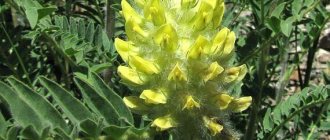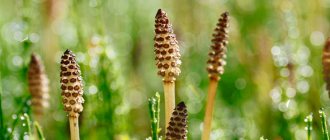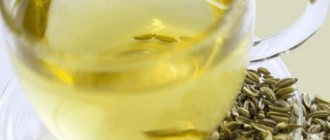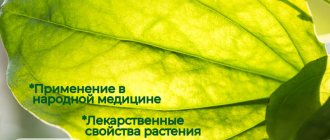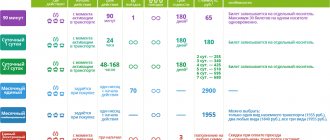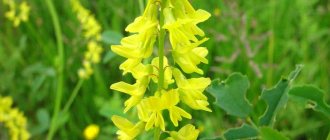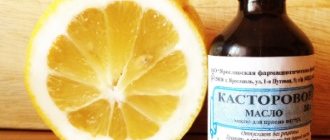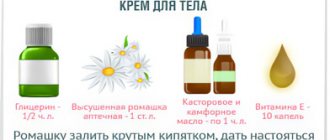A wonderful gift of nature – sea buckthorn. Sour and sweet, like honey, difficult to pick and exotic to make jam. Healing and bringing you out of the other world with its healing properties... Saving you from problems with potency, sclerosis and arthritis, it is irreplaceable. This plant can withstand severe frosts up to 45 degrees. Plant breeding is widely developed in Russia, especially in Siberia, many new varieties have been bred. The fruits are collected using the “sniffing” method, less often by shaking, cutting off branches and freezing.
It is often used to create hedges, secure excavations in ravines, slopes, highways, and prevent landslides.
It’s not for nothing that it looks like oranges: it’s also healthy and filled with vitamins (contains tocopherols, pectins, saccharides, phylloquinone, ursulic and triterpene acid). Sea buckthorn contains B-sitosterol. It prevents the development of sclerosis, so older people need to pay special attention to this plant and take more healing berries every day. Moreover, there are thousands of recipes for cooking berries and forms of preparation. In ancient times, poets wrote poems about the golden berry; Hippocrates recommended eating it. A very large amount of ascorbic acid in sea buckthorn activates blood clotting, normalizes metabolism, and strengthens the walls of blood vessels.
Antioxidants in sea buckthorn slow down the aging of the body and protect against illnesses and diseases. Good functioning of the nerves and brain will be supported by the riboflavin and thiamine present in the berries. This fruit and medicinal crop is unpretentious, frost-resistant and well known for its mild medicinal properties. Grows anywhere and in any soil. It has long been used in folk medicine of many nations.
Sea buckthorn is a multi-stemmed shrub from two to six meters, or trees with narrow lanceolate gray-green leaves on top. Dioecious small flowers are collected in racemes. The fruit is juicy, collected in a cluster, spherical or oval. It smells unpleasant, but tastes appetizing and slightly sour. Rarely used fresh. A natural multivitamin complex will allow their processing. Due to their excessive acidity, the juice of the berries retains beneficial substances for a long time. Jelly, juices and marmalade are made from sea buckthorn.
Description and chemical composition
The thorny trunk has a rather rough and thick bark. The leaves are elongated, silver-green in color on the underside. Flowering occurs in April. The oval or spherical fruits ripen between August and October and are characterized by a bright orange color and sour taste.
Why sea buckthorn is useful
The benefits of almost all parts of the plant for human health are due to the unique composition of sea buckthorn.
Berries contain the following beneficial substances:
- The berries contain up to 4.5% carotenoids, 2.57% water-soluble carbohydrates, 4.4–9% fatty oil, 2.8% organic acids, 0.79% pectins.
- The amount of triterpene acids is 505-1170 mg/100 g: they prevent heart pain and arrhythmia, normalize blood circulation, and have a therapeutic effect on insomnia, shortness of breath, and atherosclerosis.
- Sea buckthorn contains large quantities of B-sitosterol, which has an anti-sclerotic effect.
- Serotonin has an antitumor effect.
- Choline increases blood pressure, prevents fatty hepatosis and the development of atherosclerosis by reducing the level of bad cholesterol.
- Flavonoids, which are found in all parts of the plant, are anti-cancer antioxidants and can be used to prevent cancer.
- Phenolic compounds, large amounts of which are found in fresh berries, inhibit the growth of gram-negative bacteria, including Helicobacter pylori.
- The plant contains 15 microelements, including magnesium, iron, boron, manganese, sulfur, silicon, titanium, and aluminum.
Vitamins/100g
- C: 54-316 mg (reducing the risk of strokes and heart attacks, strengthening the myocardium and vascular walls, preventing hemorrhages, supporting the function of the liver, kidneys and adrenal glands);
- R: 75-100 mg (strengthening capillaries and reducing their bleeding);
- B9: 0.79 mg (participation in the formation of red blood cells, anti-carcinogenic effect against cervical cancer, normalization of hydrochloric acid production);
- B1: 0.016-0.085 mg (regulation of metabolic processes, nervous and cardiovascular activity);
- B2: 0.030-0.056 mg (participation in cellular respiration);
- provitamin A: 0.9-10.9 mg (normalization of the function of the sweat, reproductive and lacrimal glands, pancreas and thyroid glands);
- E: 8-18 mg (synthesis of sex hormones, protection of intrauterine development of the fetus, rejuvenation of the body, removal of toxins);
- K: 0.9-1.5 mg (reducing bleeding and fragility of blood vessels);
- unsaturated fatty acids – up to 77% (in oil).
Sea buckthorn oil contains many useful substances.
Thus, 100 g of oil obtained from pulp contains 112–154 mg of tocopherols, 168–215 mg of carotenoids, 0.89% phospholipids, more than 90 mg of saturated and unsaturated fatty acids, and only sea buckthorn oil is characterized by a unique combination of beneficial omega- 3 and omega-6 PUFAs in a 50:50 ratio.
100 grams of oil squeezed from the pulp of berries contains 180–250 mg of carotenoids, 40–100 mg of carotene, 110–165 mg of a-tocopherol and retinol.
The leaves and shoots of the plant are characterized by a rich composition, but the fruits and oil contain a higher content of useful substances.
General information
Sea buckthorn is a genus of plants belonging to the sucker family. This is a thorny shrub or tree with a height of 1 to 3-7 m (sometimes reaching 15 m).
Sea buckthorn leaves are narrow, alternate and long. They are green in color, with small gray or rusty-golden dots.
The flowers of this plant appear before the leaves. They are pollinated by the wind and sometimes by insects.
Sea buckthorn berries are false fruits (drupes), which consist of a nut with an overgrown, smooth, juicy, shiny and fleshy receptacle. They are densely located and seem to “stick around” the branches, have an elongated or spherical shape, and are also orange or reddish in color.
Medicinal raw materials, preparation
All parts of the plant have medicinal value: berries, seeds (seeds), leaves, young shoots, roots and bark. The berries are used to make oil, juice, marmalade, marshmallows, jam, jelly and even alcoholic drinks, and the roots, leaves and bark are used to prepare tinctures, teas and decoctions.
The berries are harvested when they are fully ripe, in dry weather. The best method of harvesting, which allows you to preserve all the beneficial properties of the berries, is quick freezing. Ripe berries can be dried in a dryer at a temperature of about 40 C. Using a press, concentrated juice is obtained from the berries, and sea buckthorn oil is made from the pulp.
Twigs and leaves can be collected in June - they are dried in a dry, dark and well-ventilated place.
You can prepare sea buckthorn juice, but using the pasteurization method, since boiling destroys most of the beneficial substances.
Contraindications
Like any other plant, sea buckthorn brings both harm and benefit, the line between which is contraindications for use, which should be taken into account!
- Treatment with sea buckthorn is contraindicated in the presence of allergic reactions and individual intolerance. The bright orange color of the berries indicates their high allergic activity, so allergy sufferers should use them for treatment with caution.
- Internal treatment is prohibited in acute inflammatory diseases of the liver, gallbladder, pancreas, and hypotension.
- Those who suffer from urolithiasis, in which there have been cases of spontaneous passage of stones in the anamnesis, as well as with increased acidity of gastric juice, should not take fresh sea buckthorn or freshly squeezed juice from the berries.
- Use sea buckthorn oil with caution if you are prone to diarrhea.
Application in pharmaceuticals
In addition to the well-known sea buckthorn oil, there are a number of equally well-known drugs that use the medicinal properties of sea buckthorn:
- Angi Sept tablets from Dr. Theiss. Used for inflammatory diseases of the pharynx and throat. Price – 160-230 rubles;
- Giporamin tablets from PharmVILAR. Antiviral drug with a broad spectrum of action. Price – 120-130 rubles;
- Rectal suppositories with sea buckthorn oil from Nizhpharm. Used to treat hemorrhoids. Price – 80-90 rubles;
- Dragee Pomogusha with sea buckthorn LLC "Yug" is a complex biologically active food supplement for children. Price – 250-300 rubles;
- Oralgin spray with sea buckthorn from Artlife is an antiseptic drug for the treatment of diseases of the oral mucosa. Price - 150-160 rubles.
Reviews from real people
What do people think about the beneficial properties of sea buckthorn?
Feedback on the forum
Feedback on the forum
Feedback on the forum
Feedback on the forum
Feedback on the forum
Feedback on the forum
In fact, there are a lot of reviews and they are all positive.
Use in folk medicine
Fresh berries
The most useful are the fresh, ripe berries of the plant, which provide the body with vital substances. Such a useful dietary supplement has a positive effect on the condition of the heart and blood vessels, reduces blood pressure, prevents heart attack and stroke, blood clots, strengthens the immune system, eliminates anemia, rejuvenates the body and helps in the restoration of the body.
Application: 50-100 grams of berries per day, 30 minutes after meals for 1 month. Since the taste of the berries is specific, they can be mixed with honey or slightly sweetened. The berries can be washed down with clean water at room temperature.
The berries are also recommended for the treatment of cancer of the esophagus or stomach (in complex therapy). When treating cancer, take 1 tbsp. berries three times a day.
When treating female and male infertility, sea buckthorn berries should be present in the daily diet; you can consume them 50 grams per day. If you can’t find fresh berries or it’s not in season, you can use frozen or dry ones, after soaking them in warm water.
Sea buckthorn oil: properties and applications
Sea buckthorn oil can be used externally and internally, not only on the skin, but also on the mucous membranes. It is best to buy it ready-made, from a pharmacy chain - it is sterile and can be used for various purposes. The only recommendation is to buy two bottles, one of which is used for external use, and the second for internal therapy.
Internal treatment
Taking the oil internally is especially indicated for the treatment of ulcers and gastritis, poisoning, dysbacteriosis, chronic diseases and toxic damage to the liver and kidneys, as well as atherosclerosis and anemia. Application: 1 tsp. oil half an hour before meals three times a day.
For cancer of the esophagus or stomach, take half a teaspoon of oil three times a day before meals during the entire period of radiation therapy and another 3 weeks after its completion.
For a sore throat, add half a teaspoon of oil to a glass of warm milk and drink it in the morning and evening before meals.
External treatment
- As a basis for compresses – in the treatment of burns and frostbite at the regeneration stage, as well as bedsores;
- As an impregnation for tampons at night - for the treatment of colpitis, cervical erosions (7-10 days in a row);
- 1-2 ml of oil is injected into the maxillary sinus twice a day to treat sinusitis (7-10 days);
- To combat acute rhinitis, it is enough to instill 1-2 drops of oil into each nostril 2-3 times a day;
- For external lubrication of affected areas of the skin 2-3 times a day - in the treatment of trophic ulcers, purulent wounds, dermatitis;
- For inhalations, 2-3 tbsp. spoons of oil per 1 liter of water - in the treatment of inflammatory diseases of the pharynx, sore throat, tonsillitis, influenza;
- Mixed with camphor (half a glass of oil per 2 tablespoons of camphor) for rubbing at night - for an old and intractable cough, for at least 4-5 days in a row;
- In ophthalmology, sea buckthorn oil is used for keratitis, damage to the cornea of the eye, and burns of the cornea.
- Pure oil is used to lubricate the tonsils - in the treatment of acute and chronic tonsillitis, as well as in the recovery period after tonsillectomy.
Use of oil in cosmetology
- Sea buckthorn for skin is used for dry skin - you should gently rub warm sea buckthorn oil into the skin at night, instead of cream;
- Oil is used for facial skin if there is excessive oiliness - wiping problem areas 2 times a day with a cotton pad lightly dipped in oil helps solve this problem;
- Sea buckthorn oil is ideal as a basis for massage, since it is well absorbed, does not create excessive oiliness on the skin and promotes rapid heating of tissues;
- For brittle nails, it is recommended to take daily baths with heated sea buckthorn oil;
- Hair oil helps with hair loss - you can rub it into the roots and leave it overnight under a cotton cap, and in the morning wash your hair thoroughly, repeating the procedure 2 times a week.
Sea buckthorn oil, the harms and benefits of which are described above, is a universal natural product that helps in the effective treatment of many diseases, and therefore should be in every home.
Sea buckthorn seeds
A decoction of sea buckthorn seeds helps eliminate diarrhea - 1 tbsp. seeds are boiled over low heat in 200 ml of water. Take the cooled decoction, 2 tbsp. 3-5 times a day before meals.
Infusions, teas and decoctions of sea buckthorn
Sea buckthorn leaves are characterized by the same beneficial properties and contraindications as the berries of the plant. Dry raw materials are used to produce medicinal drinks.
It is recommended to drink tea from sea buckthorn leaves for stomatitis, periodontitis and pulpitis, as well as for diabetes. To obtain it, 1 tsp. dry leaves pour a glass of boiling water, leave for ten minutes, filter and drink 200 ml twice a day.
A decoction of the leaves helps in the treatment of joints: 1 tbsp. dry crushed leaves are poured with a glass of boiling water and boiled over low heat for 10 minutes. Take half a glass of cooled broth 2 times a day.
The sea buckthorn infusion is prepared in the same way as a decoction, only it is not boiled, but infused for half an hour. Take half a glass 2 times a day for rheumatism and gout.
Sea buckthorn juice
Fresh sea buckthorn juice is a natural multivitamin recommended for acute respiratory viral infections, anemia, hypovitaminosis, muscle dystrophy, hyposecretory gastritis, hypotension, liver diseases, and colitis. Why juice is beneficial for women is that it helps in the fight against premature aging. Take 100 ml twice a day after half an hour after meals (maximum 300 ml per day).
Sea buckthorn jam
Delicious amber-colored jam can be found on store shelves. However, its benefits are controversial - berries digested with sugar have little benefit, and there are no vitamins at all, since they are destroyed during boiling. Jam can only be used as a dessert. For those who have a sweet tooth, there is a useful recipe for jam - ground sea buckthorn: chop fresh berries and mix them with sugar. This product contains all the necessary nutrients and is pleasant to the taste.
Sea buckthorn for the winter
The fruits are collected with care; the plant has thorns. It is more convenient to shake off the berries. A cloth is spread under a tree or bush, on which the harvest will fall. Now you need to take care of your preparations for the winter.
Jam
In sea buckthorn jam for the winter, prepared according to this recipe, the berries will remain safe and sound.
Ingredients:
- 2 kg. sea buckthorn;
- 2 kg. Sahara;
- 300 ml. water.
Preparation:
- Wash the fruits in a colander under running water.
- Mix sugar with water.
- Bring to a boil over low heat.
- Cook, stirring for 10 minutes.
- Pour syrup over berries.
- Leave for 3 hours.
- Strain through a colander.
- Bring the syrup to a boil again.
- Pour over the fruits.
- Cook over low heat for 15 minutes.
- Pour into sterile jars.
- Close with metal or nylon lids.
Store in a cellar or refrigerator.
Sea buckthorn juice
Prepared sea buckthorn juice for the winter will become a source of vitamins for the body during the cold season. The drink is prepared in various ways. Add sugar, honey, vegetable and fruit juices to taste. Here is one of the most popular recipes:
- Pass the fruits through a juicer.
- Boil syrup (1 liter of water, 1 kg of sugar).
- Mix hot syrup with juice (proportion 1:2).
- Pour the drink into sterilized liter jars.
- Place in a water bath.
- Sterilize for 20 minutes. at 85 degrees.
- Roll up the lids.
- Turn upside down.
- Cover with a blanket.
- Leave for 2 days.
- Store in a dark, cool place.
Sea buckthorn oil
This product is an excellent medicinal and cosmetic product. Sold in stores and pharmacies. But why buy if a bush with orange berries grows in the yard and preparing sea buckthorn oil is not at all difficult:
- Squeeze the juice from the berries.
- 3 tbsp. Pour seedless cake into a glass jar.
- Pour 500 ml. unrefined vegetable oil.
- Leave for 8 days.
- Strain.
- Ready.
To improve the properties of the product, you can once again pour the resulting oil into a new cake and leave it for a week.
Compote
Sea buckthorn compote is an aromatic drink with a pleasant sweet and sour taste, reminiscent of pineapple. Preparation requires a minimum of time . The recipe is for a 3-liter jar.
Ingredients:
- sea buckthorn fruits - 1 kg;
- water - 1 l.;
- sugar - 200 gr.
Preparation:
- Clean the berries from debris.
- Rinse.
- Sterilize jars and lids.
- Distribute the berries among the jars by 1/3 of the volume.
- Add water and sugar to the pan.
- Boil.
- Fill the jars with boiling syrup.
- Sterilize for 15 minutes.
- Remove from stove.
- Roll up the lids.
- Cover with a warm cloth.
How to freeze sea buckthorn
Freezing is the easiest way to preserve berries for a long time without losing quality.
For this:
- Rinse the fruits.
- Dry on a waffle towel.
- Place on a tray in a single layer.
- Place in the freezer.
- Turn on the deep freeze function.
- After 3 hours, take it out.
- Place in freezer bags.
- Place in the freezer.
You can also freeze sea buckthorn for the winter in plastic containers designed for sub-zero temperatures. In this state, the berry can be stored for 6 months without losing its beneficial properties.
Scientific research
Traditional medicine recipes have been confirmed in numerous studies and experiments:
- Evidence of the anti-carcinogenic effect of sea buckthorn was obtained back in Soviet times. The antitumor activity of sea buckthorn allows it to be used to reduce the risk of metastasis of malignant neoplasms.
- Another study published in the Journal of Food Biochemistry confirmed that sea buckthorn helps in the treatment of atopic dermatitis when taken regularly for 4 months.
- The local wound-healing effect of the plant was also confirmed. The journal Food and Chemical Toxicology published a report on a scientific experiment on rats - sea buckthorn oil perfectly healed burns.
- A study published in the European Journal of Clinical Nutrition demonstrates the normalizing effect of sea buckthorn on blood sugar levels in diabetics, selectively targeting the glucose spike that occurs after a meal.
- The hepatoprotective effect of sea buckthorn oil has been confirmed by a number of studies. One of them involved patients with liver cirrhosis who took 15 grams of sea buckthorn extract 3 times a day for six months. After treatment, a decrease in the levels of hyaluronic and bile acid, laminin and collagen types III and IV was found in the blood of patients.
Author:
Sabuk Tatyana Leonidovna hygienist, epidemiologist
Beneficial features
Sea buckthorn holds the record among all plants growing in Russia in terms of the amount of vitamins, acids, microelements and other useful elements.
It has many useful properties:
- Helps improve metabolism;
- Strengthening immunity;
- Strengthening the walls of blood vessels;
- Prevents the formation of blood clots;
- It has antioxidant properties, which means it prevents aging;
- Fights colds and viral infections;
- Removes excess cholesterol from the body;
- Reduces blood sugar levels;
- Normalizes lung function;
- Cleanses the liver and blood vessels.
Sea buckthorn is recommended to be taken for diseases of the cardiovascular system, gastrointestinal tract, vitamin deficiency, anemia and exhaustion.
Everyone knows the wonderful properties of sea buckthorn oil. It is effective for various skin lesions and burns. It is recommended for gastric and duodenal ulcers, stomatitis and pulpitis, laryngitis and pharyngitis, and conjunctivitis.
The peculiarity of sea buckthorn is that it retains its beneficial properties when frozen. Consuming 100 grams per day will provide the body with all the necessary nutrients.
